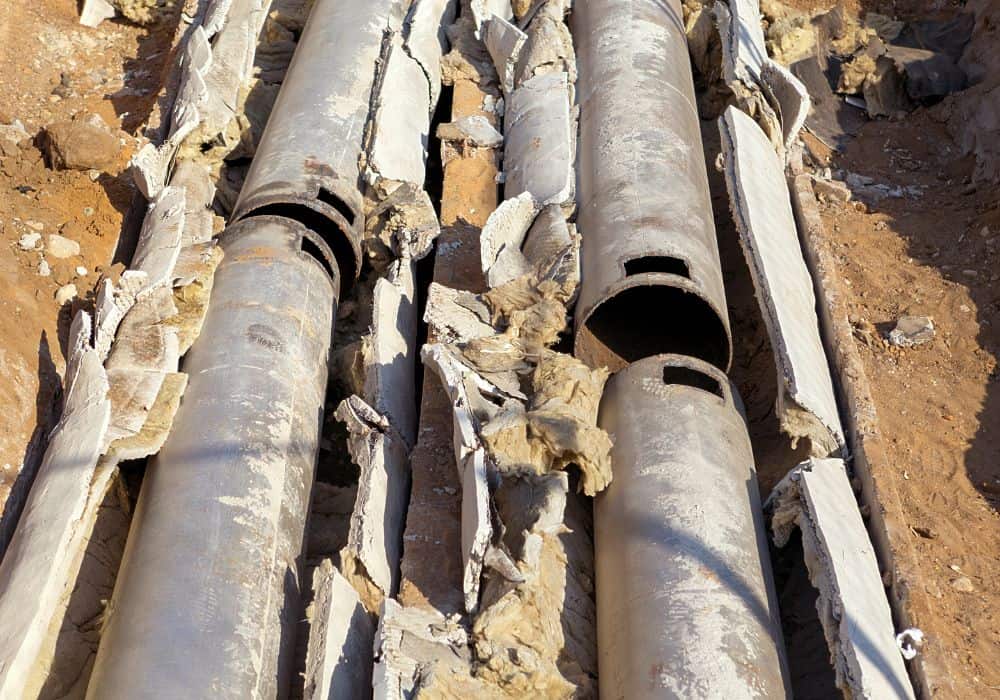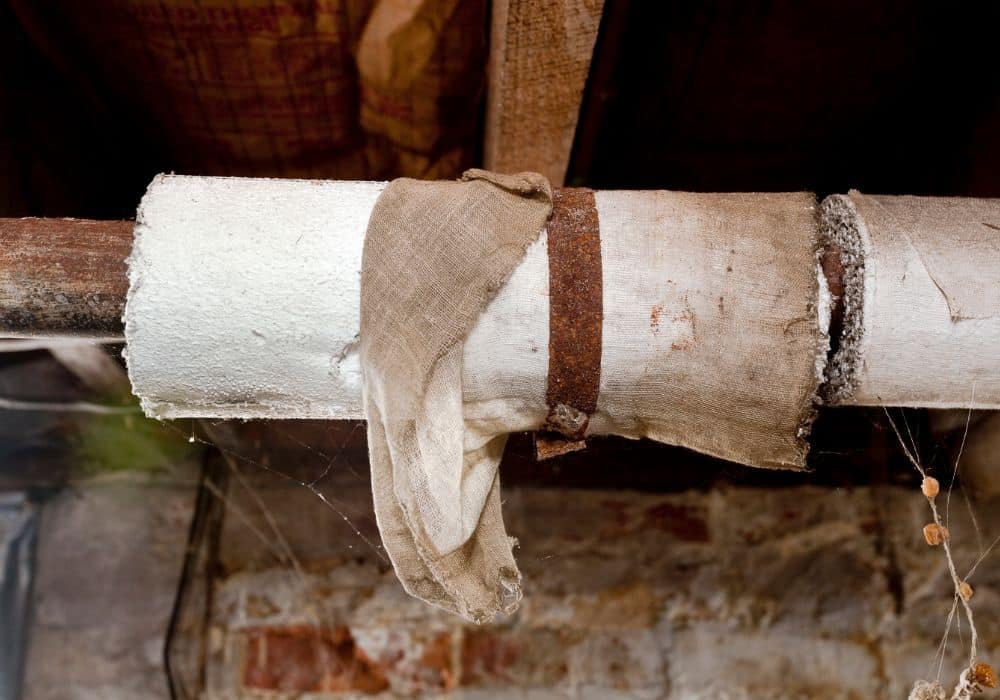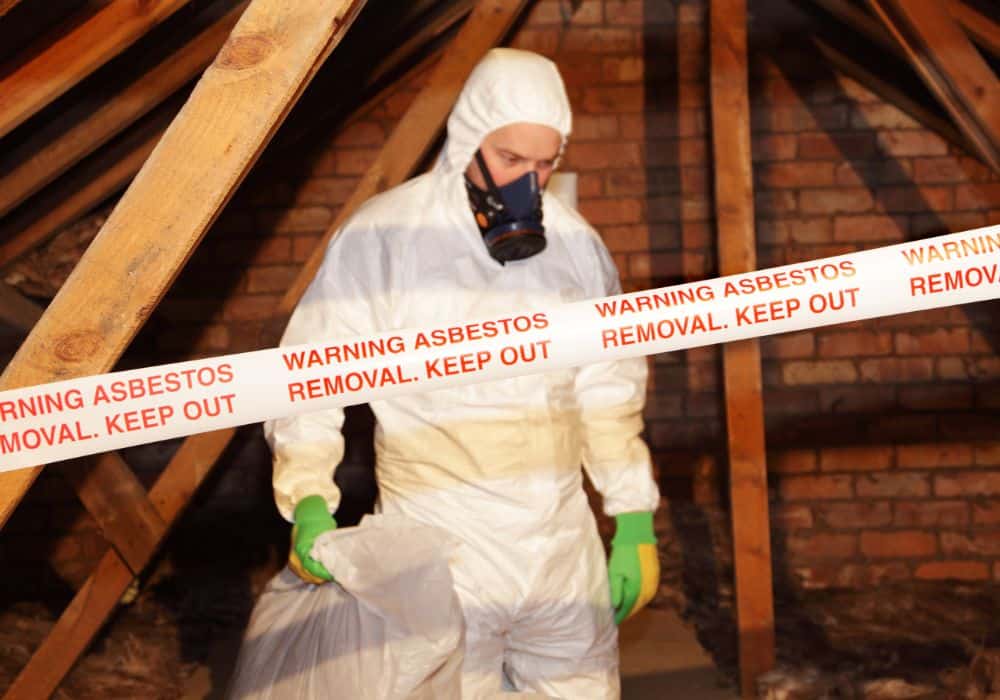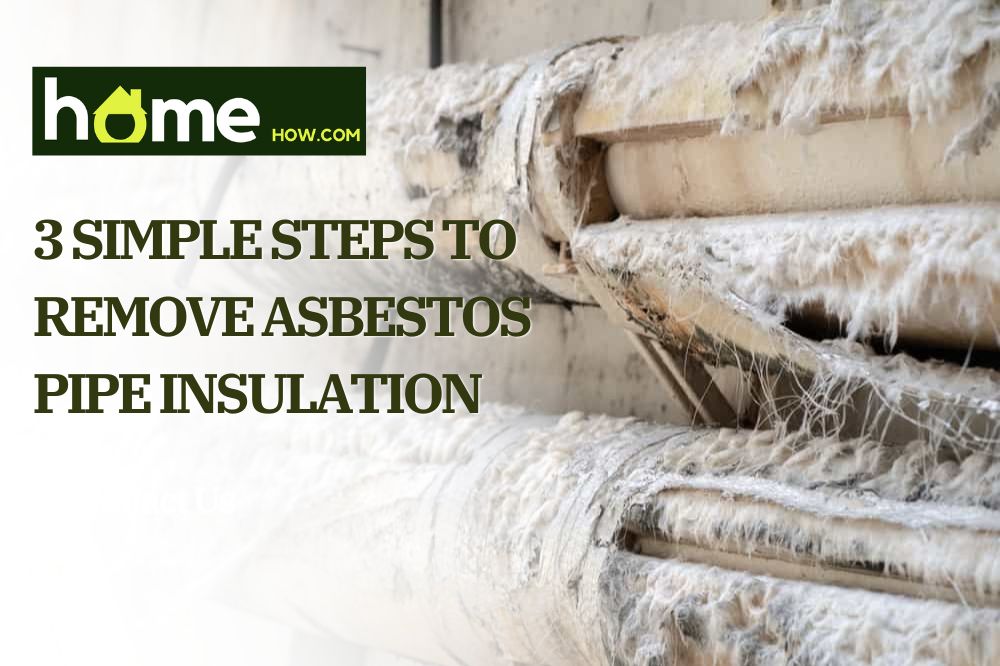Asbestos is the name given to a set of naturally occurring fibrous minerals that have, throughout history, been used for building construction. Over the past couple of decades, though, it has been discovered that asbestos exposure can be toxic for humans.
As a result, asbestos isn’t used as frequently as it once was and when it is, certain regulations must be adhered to. In some countries like the United Kingdom, the use of it has been banned completely since 1999.
However, for homeowners living in older properties and workers working in a building that was built before the 21st century then asbestos may be an issue. You are most likely to find asbestos on the roofs of buildings or on pipes, furnaces, and boilers.
Today, we’ll be looking at the best ways to go about removing asbestos from pipes in your home if you have recently discovered it.
When Does Asbestos Become An Issue?
As we’ve already touched on, asbestos can be incredibly harmful to humans. However, it isn’t simply a case of someone going into a room that contains asbestos and then becoming instantly infected with some kind of disease.
For someone to become ill as a result of asbestos exposure, they will need to have been exposed to it regularly over a number of years. You also aren’t really at risk if the asbestos is wrap sealed and/or undisturbed.
However, if the asbestos becomes disturbed, either by someone knocking it or tears appearing on the material where the asbestos lives, then the asbestos fibers will go airborne. As a result, those who reside in this building will then be inhaling these fibers regularly. When this happens, issues relating to the lungs can start to occur.
Unfortunately, pipe insinuation is one of the biggest culprits when it comes to asbestos self-sabotage. Water damage is frequently the cause of asbestos being disturbed and the fibers becoming airborne.
How Do You Know If You Need To Remove Asbestos From Your Pipe Insulation?

It is possible to have asbestos in your home and not have any issues. However, it’s important to establish whether you need to get it removed or not. On top of that, you also need to establish whether it’s a job you can do yourself or if you need to hire a professional in asbestos removal to do the job for you.
The first thing you need to do is to confirm that you have asbestos present in your home. To do this, you can either call in a professional asbestos testing company or send in a sample of the suspected asbestos to a laboratory. After some lab testing, the testing company will be able to tell you whether you have asbestos in your home or not.
Once you have confirmation that asbestos is present, the next thing you need to do is to ring a licensed asbestos contractor. This specialist will come to your home and conduct a thorough inspection of your pipe insulation and come to a decision as to whether asbestos dust or fibers have become airborne from the insulation.
This specialist will be able to then run you through your options depending on the severity of the situation. The first option is to do nothing because the asbestos is in a good condition and hasn’t been disturbed. The second option is encapsulation or encasement where the aim is to prevent the asbestos from becoming airborne. The final option is for them to conduct full asbestos removal.
When it comes to pipe insulation, you are usually able to remove the asbestos yourself meaning you won’t need to pay extra for professional asbestos removal if that is the recommended course of action. Below, we have provided some instructions as to how you can do this.
Asbestos Pipe Insulation Removal – Step By Step

Before you start attempting to remove asbestos from a property, you need to acquire a special license or permit from the relevant health and safety office in your country. Once you have this, please follow the steps below:
Step 1 – Preparation
The first thing that you need to do is to thoroughly prepare your work area for the removal of asbestos. This means you need to ensure that the room is completely empty and that things that can’t be removed, such as walls, ceilings, and floor tiles, are covered in protective, plastic sheeting. Use duct tape to seal this coating in place and turn off the heating in the building and close all the windows.
Make sure nobody else is inside the property while you conduct the removal and wear protective clothing, including a mask, respirator, disposable coveralls, and gloves as a precaution.
Step 2 – Removal
One of the most important things to remember when removing asbestos from your pipe insulation is that you shouldn’t use power tools. The asbestos will have been there for decades and is therefore very delicate.
Soak the pipes with hot water and allow the water to absorb the asbestos for around half an hour. Do not leave the room while the water soaks it up, just be patient and wait. After half an hour is up, use a knife to scrape the asbestos from the pipe. It should come off easily at this point, so if it isn’t then soak the pipes further until it does.
As you remove asbestos, place it in waste disposal bags. Ensure that you are topping up the pipes with water regularly because if they dry up then asbestos fibers will become airborne. Every time you fill a waste bag, seal it with duct tape immediately.
After you have removed all the asbestos possible, cover the pipes with an encapsulant to prevent any lingering asbestos from going airborne.
Step 3 – Clean up
Label each waste bag to indicate that asbestos is present and dispose of them in an authorized location. To find out where your closest authorized location is, contact your local council.
In terms of cleaning up the room where the asbestos from removed, remove the plastic coatings that you laid during the preparation stage. Roll them up inwardly to prevent any gathered dust from escaping. Hepa vacuums can be used to clean up the flooring, but this is optional.
The final thing to do is to remove your protective clothing and gloves and dispose of them with the rest of the asbestos waste.
Why It’s Important To Remove Asbestos From Pipe Insulation

After reading through the steps you need to take to remove asbestos from pipe insulation inside your home or office, you may be thinking it sounds like a lot of effort. While it may take a bit of graft, it’s an incredibly important thing to do if you want to protect your health and the health of those who live or work with you.
The bottom line is, if you live or work in a building that has disturbed asbestos then you are running the risk of becoming ill. There are a number of health risks attached to asbestos, but the main ones to worry about (if you don’t take our advice) are as follows:
1. Asbestosis
This is the most common health condition that you can get in relation to asbestos. This is where asbestos fibers cause scarring in your lungs which in turn makes it harder to breathe due to the fact oxygen and carbon dioxide can no longer pass through your lungs as easily as they once could.
The main symptoms of asbestosis are shortness of breath, wheezing, fatigue, and swollen fingertips. Bizarrely, it can take 20-30 years before symptoms develop.
2. Pleural disease
Pleural disease causes a build-up of fluid around the lungs. This lung disease makes breathing more difficult and can even turn your skin blue. Many people also report sharp chest pain that gets worse when they breathe in.
3. Lung cancer
Lung cancer is enough to strike fear into anyone, but try not to panic as there is every chance you don’t have this disease. While asbestos exposure is unlikely to directly give you cancer in the lungs, it does unfortunately increase your chances of getting it in the future. If you are a smoker who has been exposed to asbestos for long periods of your life, you should perhaps consider giving up smoking for health reasons.
The most common symptoms of lung cancer are a persistent cough, hoarseness, and fatigue. Many of the key lung cancer symptoms mirror those associated with asbestosis so it’s important to get yourself checked over with a doctor instead of self-diagnosing.
4. Mesothelioma
Mesothelioma is another type of cancer that many experts believe has links to asbestos. It is a rare type of cancer that forms in the membrane which covers your lungs and chest. Sometimes, this type of cancer can develop 30 years after you’ve been exposed to asbestos exposure.
The main symptoms of mesothelioma are weight loss, shortness of breath, chest pain, and persistent coughing.
Conclusion
To conclude, removing asbestos from pipe insulation is a tricky but manageable job. However, due to the potential risks involved, we would urge everyone to err on the side of caution when it comes to asbestos removal and contact a professional to do the job for you. Not only are they going to resolve the problem for you, but they will also prevent you from coming into close contact with any harmful fibers.
